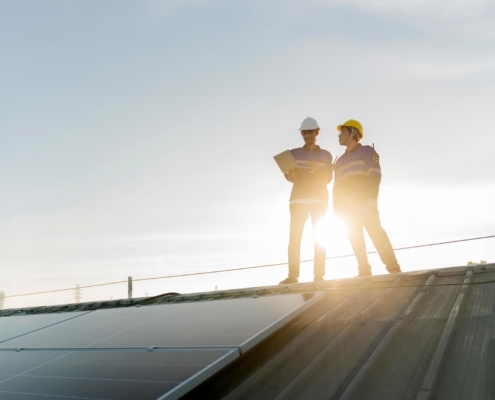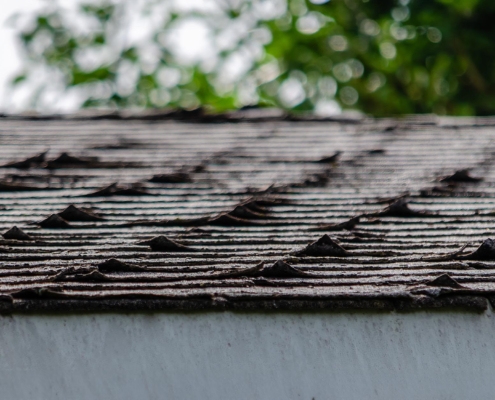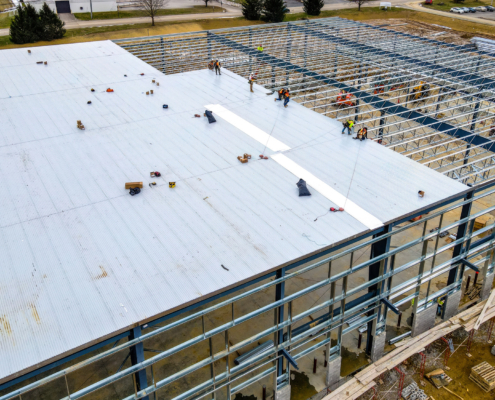 https://paramountkangaroof.com/wp-content/uploads/2023/11/Front-view-of-two-professionals-conducting-a-roof-inspection.jpg
1250
2000
AbstraktMarketing
/wp-content/uploads/2023/11/cropped-Paramount-Kangaroof-300x174-1.webp
AbstraktMarketing2023-11-13 09:00:002025-10-30 13:34:11How Often Should Your Roof be Inspected?
https://paramountkangaroof.com/wp-content/uploads/2023/11/Front-view-of-two-professionals-conducting-a-roof-inspection.jpg
1250
2000
AbstraktMarketing
/wp-content/uploads/2023/11/cropped-Paramount-Kangaroof-300x174-1.webp
AbstraktMarketing2023-11-13 09:00:002025-10-30 13:34:11How Often Should Your Roof be Inspected?Exploring, Assessing, and Repairing Signs of Wind Damage on Your Roof
Hook: Roof damage can be subtle and difficult to detect, and it can seriously threaten the stability of your building. This blog will guide you in how to identify, assess, and repair wind damage on your roof so that you can extend its lifespan and protect your property from the elements.
What Is Roof Wind Damage?
Wind roof damage is the destruction or harm caused to a roofing system by strong winds. This destruction can range from minor issues like torn shingle tabs to severe problems that might require a total roof replacement. This damage often occurs during extreme weather events that cause a range of physical impacts on the roof, distressing the roofing material and the structure underneath.
Possible Sources of Wind Damage on Your Roof
Wind damage on roofs can occur due to various factors. High winds, tornadoes, and hurricanes can whip up debris like large branches or other objects and hurl them onto the roof, causing structural damage. Strong winds can also directly damage roofs by peeling off or lifting shingles, exposing the underlying roof deck or the inside of the building.
Other contributing factors include the age and type of roofing material. Older, worn-out shingles or roofs with weak adhesive bonds are more susceptible to severe wind damage.
Signs of Wind Damage on Your Roof
Identifying the signs of wind damage to your roof is critical for homeowners, facility managers, and building owners alike. If left unattended, even minor signs of wind damage can lead to higher repair costs down the line. Here are some of the most common signs of wind roof damage.
Missing or Damaged Shingles
One of the most visible signs of wind damage is missing or damaged shingles. Strong winds can peel or break off shingles from the roof, exposing the underlying layers to weather elements. If many shingles are missing, this might indicate serious wind damage that may require professional attention.
Granules in Gutters
Another common sign of wind damage is finding shingle granules in gutters. High wind speeds can cause granules to come loose and wash into the gutters. If you notice a significant accumulation of granules, it should act as a red flag for wind damage.
Peeling Asphalt Roof Shingles
Peeling or curling of shingles is also a clear sign of wind damage on your roof. This often happens when winds lift up the edges of shingles and rainwater gets underneath, leading to peeling or curling over time.
Leaks
Leaks, particularly after a storm or an extreme weather event, are a telltale sign of wind damage. They could signify damage to the roof’s surface, underlayment, or other areas. In such cases, it’s crucial to contact a local roofing company for a comprehensive assessment.
Dents or Pockmarks on Roofing
Dents or pockmarks on the roof may indicate wind hail damage, particularly if accompanied by missing shingles or other signs of wind damage. Such damages, if left unrepaired, can lead to more serious problems like leaks and water intrusion.
With the windy season just around the corner, you need to prepare your roof so that it can safely protect you and your building occupants from the elements. Check out our blog on how to prepare your roof for storms to learn more.
Assessing the Extent of Wind Damage on Your Roof
Working with a professional roofing contractor is essential for accurately and safely assessing the extent of wind damage on your room, especially after a violent weather event. These professionals are trained to spot even the most subtle signs of roof wind damage that untrained homeowners can overlook. Plus, they often offer free roof inspections, providing an affordable way to ensure your property is safe and sound.
Roof Repair vs. Roof Replacement
Determining whether you need roof repairs or replacement lies in the degree of wind damage on your current roof. Minor damages like a few missing shingles can typically be quickly patched up by your local roofing company. However, if there is extensive damage across large parts of your roof or the underlayment is damaged, a full roof replacement may be necessary. Your roofing contractor can help you determine the best course of action for the longevity of your roof and the safety of your building.
The Consequences of Avoiding Roof Repairs or Replacement
Ignoring roof wind damage invites further deterioration and unwanted consequences. Persistent high winds can exacerbate existing damages, leading to water leaks and serious water damage within your building. Untreated roof storm damage may also result in mold or mildew growth and can even cause structural damage.
Preventing Future Wind Damage on Your Roof
Taking preventative measures can save you from major future expenses. There are several ways in which roofing contractors may strengthen your current roof system against severe weather conditions.
Choosing Wind-Resistant Roofing Materials
Modern advancements in roofing material technology make it possible to install roofs that are highly resistant to wind. High-quality shingles, metal roofing, and slate tiles are some materials known for their high wind resistance. Before installation, it’s advisable to consult with your roofing contractor to determine what’s best for your home or commercial location.
Regular Maintenance and Inspection to Avert Major Wind Damages
Routine roof inspections and maintenance go a long way in preserving the longevity of your roof. Ensure that you have an inspection performed by an expert roofer at least once a year. Professional roof inspections can detect underlying issues that may become severe in the face of a weather event and provide appropriate solutions promptly.
Protect Your Roof With Paramount KangaRoof
At Paramount KangaRoof, we understand the importance of timely and quality roof repair and replacement. As your dependable roofing expert, we help you deal with wind damage on your roof to ensure your property can withstand the elements.
If you’re dealing with the signs of wind damage, contact us today for a comprehensive inspection and start on the path to restoring your roof.
Related Postings
 https://paramountkangaroof.com/wp-content/uploads/2023/11/Front-view-of-two-professionals-conducting-a-roof-inspection.jpg
1250
2000
AbstraktMarketing
/wp-content/uploads/2023/11/cropped-Paramount-Kangaroof-300x174-1.webp
AbstraktMarketing2023-11-13 09:00:002025-10-30 13:34:11How Often Should Your Roof be Inspected?
https://paramountkangaroof.com/wp-content/uploads/2023/11/Front-view-of-two-professionals-conducting-a-roof-inspection.jpg
1250
2000
AbstraktMarketing
/wp-content/uploads/2023/11/cropped-Paramount-Kangaroof-300x174-1.webp
AbstraktMarketing2023-11-13 09:00:002025-10-30 13:34:11How Often Should Your Roof be Inspected? https://paramountkangaroof.com/wp-content/uploads/2023/11/Front-view-of-several-curling-roof-shingles.jpg
1250
2000
AbstraktMarketing
/wp-content/uploads/2023/11/cropped-Paramount-Kangaroof-300x174-1.webp
AbstraktMarketing2023-11-08 09:00:002025-10-30 13:34:11The Impact of Heat on Your Roof
https://paramountkangaroof.com/wp-content/uploads/2023/11/Front-view-of-several-curling-roof-shingles.jpg
1250
2000
AbstraktMarketing
/wp-content/uploads/2023/11/cropped-Paramount-Kangaroof-300x174-1.webp
AbstraktMarketing2023-11-08 09:00:002025-10-30 13:34:11The Impact of Heat on Your Roof https://paramountkangaroof.com/wp-content/uploads/2023/10/Tips-on-Choosing-the-Right-Commercial-Roofing-Contractor-for-Your-Project.jpg
1250
2000
AbstraktMarketing
/wp-content/uploads/2023/11/cropped-Paramount-Kangaroof-300x174-1.webp
AbstraktMarketing2023-10-09 09:00:002025-10-30 13:34:12Tips on Choosing the Right Commercial Roofing Contractor for Your Project
https://paramountkangaroof.com/wp-content/uploads/2023/10/Tips-on-Choosing-the-Right-Commercial-Roofing-Contractor-for-Your-Project.jpg
1250
2000
AbstraktMarketing
/wp-content/uploads/2023/11/cropped-Paramount-Kangaroof-300x174-1.webp
AbstraktMarketing2023-10-09 09:00:002025-10-30 13:34:12Tips on Choosing the Right Commercial Roofing Contractor for Your Project




